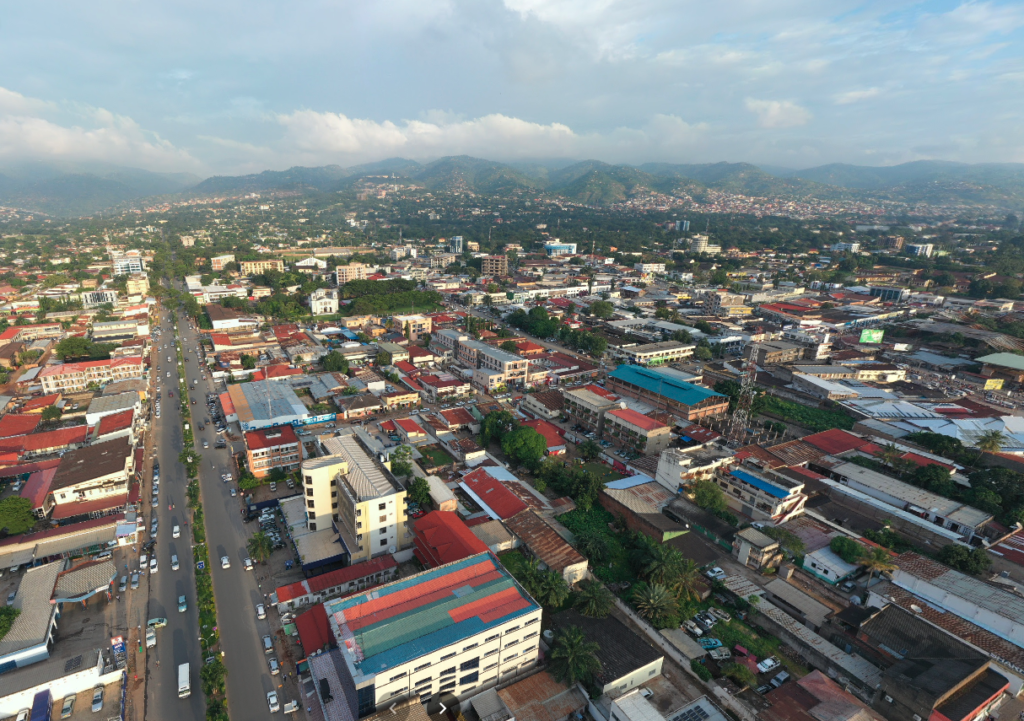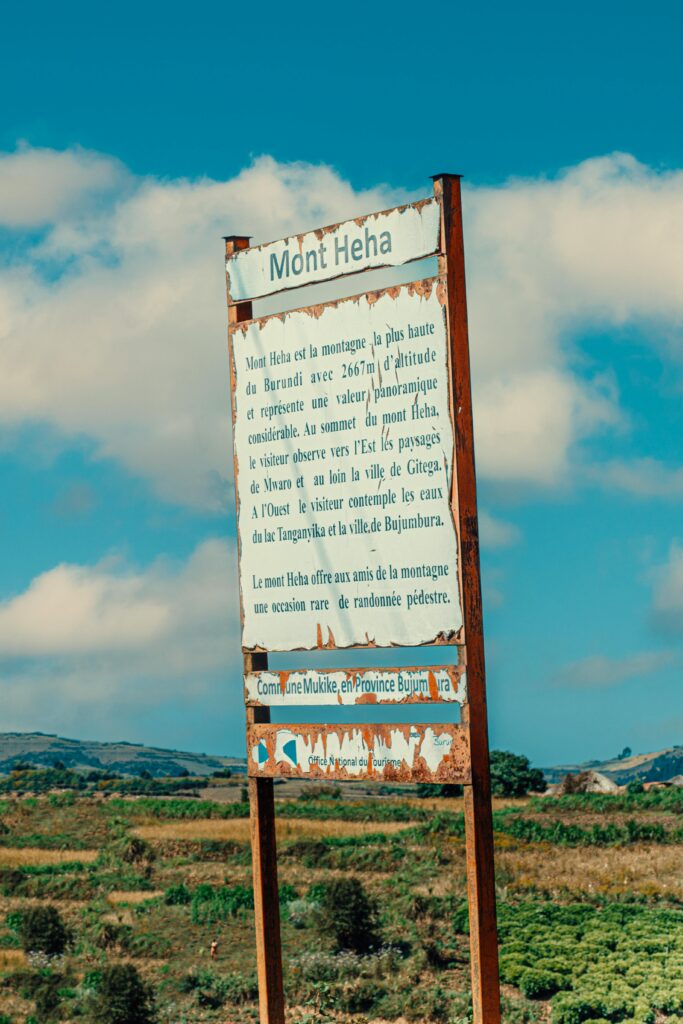Burundi / Repuburika y’Uburundi – Let’s explore here
What’s it like in Burundi?
Burundi is small, landlocked country in east Africa. The country lies on an elevated plateau, averaging 5,600 ft (1,707 m) in height. At one time a densely forested country, subsistence agriculture and grazing has reduced the forest to only 6% of the country. The highest point is Mount Heha, in the west of the country, at 8,806 ft (2,684 m) above sea level.
It has a very troubled history, involving much political instability, resulting in it being one of the least developed and poorest countries on the planet. It shares land borders with Rwanda, Tanzania and the Democratic Republic of Congo.
Burundi has a population of around 14 million (2024), about 135,000 of whom live in the capital, Gitega. By contrast, over one million live in the metropolitan area of Bujumbura.

A bit about the history of Burundi
Early History and Kingdom of Burundi
Burundi, located in central Africa, has a long history that dates back several centuries. The region was home to the Twa, Hutu, and Tutsi peoples, who established distinct social and political structures. The Kingdom of Burundi, founded in the 16th century, was one of the most prominent pre-colonial kingdoms in east Africa. The monarchy, led by the Mwami (king), maintained a centralised system of governance and was supported by a highly organised military.
Colonial Period
In the late 19th century, Burundi, along with neighbouring Rwanda, was colonised by Germany as part of German East Africa. After World War I, the territory was transferred to Belgium under a League of Nations mandate. During Belgian rule, which lasted until 1962, Burundi and Rwanda were administered as a single entity called Ruanda-Urundi. The Belgians reinforced ethnic divisions between the Hutu majority and Tutsi minority, exacerbating tensions that would later contribute to political instability.
Path to Independence
Following a wave of decolonisation across Africa, Burundi gained independence from Belgium on 1 July 1962. The country adopted a constitutional monarchy with King Mwambutsa IV as its first ruler. However, independence brought political challenges, as tensions between the Hutu and Tutsi communities led to violence and instability.
Political Instability and Coups
In 1966, King Mwambutsa IV was overthrown in a military coup, and Burundi became a republic under President Michel Micombero. The coup marked the beginning of a series of political upheavals. In the early years of independence, Burundi experienced several cycles of violence between the Hutu and Tutsi communities. These ethnic tensions led to a violent uprising by Hutu militants in 1972, which resulted in the mass killing of tens of thousands of Hutus.
Civil War and Peace Process
The ethnic conflict between Hutus and Tutsis continued to escalate, leading to a brutal civil war that lasted from the mid 1990s until 2005. The conflict, which was part of a broader regional crisis in the Great Lakes region, saw widespread atrocities and a humanitarian disaster. In 1993, the assassination of the first democratically elected president, Melchior Ndadaye, triggered a violent outbreak of civil war. However, after years of negotiations and peace talks, a power sharing agreement was signed in 2000, and the war officially ended in 2005 with the establishment of a new government.
Post Civil War Era
Following the civil war, Burundi transitioned to a multiparty democracy. The country made significant efforts in rebuilding its economy and institutions, although challenges such as poverty, corruption and political tensions have persisted. In 2005, Pierre Nkurunziza was elected president, and his leadership saw further political unrest. In 2015, after he announced his decision to seek a third term, protests erupted and the country faced renewed violence.
Modern Burundi
Burundi continues to face political instability and human rights concerns. While the country has made some progress in terms of post-war recovery, it remains one of the poorest nations in Africa. Tensions between the government and opposition groups, as well as the ethnic divide, remain significant challenges in the pursuit of peace and stability. The international community has closely monitored the situation, particularly after the 2015 unrest, with ongoing efforts to support Burundi’s democratic transition.


Burundi road trip
Our Burundian road trip is part of a much larger African road trip.
Map of our road trip through Burundi

Our current planned road trip through Burundi takes us from Tanzania via the capital, Gitega to the coast of Lake Tanganyika, before heading north to Rwanda.
It’s likely that we’ll actually explore the country quite extensively, so we expect that this planned cross-continental route will change a lot.
Hopefully our journey will improve our knowledge of this intriguing and beautiful country, and enable us to meet some interesting people. We’ll be updating this page at that time – don’t forget to check back 🙂
What’s it like to drive in Burundi?
They drive on the right hand side of the road in Burundi. In the main, roads are very poor, with many being unsurfaced dirt tracks. Driving standards are also poor.
Do you require an international driving permit in Burundi?
We’ve created a dedicated page to driving abroad, which answers this question, and more, which you might find helpful.
Can you use your UK driving license when driving through Burundi?
We’ve created a dedicated page to driving abroad, which answers this question, and more, which you might find helpful.
Do I need a carnet de passages to drive in Burundi?
A Carnet de Passages is required to overland in Burundi. We’ve created a dedicated page to driving abroad, which answers this question, and more, which you might find helpful.
What is the weather like in Burundi?
The rainy season in Burundi is from mid September to May. The dry season is from June to August. The best time to visit is between June and August. The worst months are September to April.
What currency do they use in Burundi?
In Burundi they use the Burundian franc, although US dollars and Euros are also widely used. Cash is widely used. The use of credit / debit cards is not widely accepted outside of tourist areas. Travellers cheques are not readily accepted. There are very few ATMs in cities and towns throughout the country.
You should make yourself aware of the amount that your bank charges you for using credit and debit cards abroad. Often credit cards are cheaper for purchasing items directly, and for withdrawing cash from ATMs.
What language do they speak in Burundi?
They speak Kirundi in Burundi, although English and French are also spoken in tourist areas.
What time zone is Burundi in?
Remember, when you’re planning your next trip to take a look at what time zone it’s in.
Do I need a visa to visit Burundi?
We’ve created a dedicated, more comprehensive page on visas, which you should find helpful. Check it out!
Is wild camping legal in Burundi?
Yes, wild camping is fine in Burundi.
What plug / socket type do they use in Burundi?
In Burundi they use plug / socket types C and E.


Health issues in Burundi
Is it safe to drink water in Burundi?
No, it is not safe to drink tap water in Burundi. Bottled water is readily available throughout the country.
What vaccinations are required for Burundi?
This NHS website is kept up to date with all relevant information on vaccinations in Burundi.
Phones in Burundi
What is the country calling code for Burundi?
The country calling code for Burundi is +257
What are the emergency phone numbers in Burundi?
- The emergency number for police in Burundi is: 117
- In Burundi, the emergency number for ambulance is: 112
- The emergency number for fire in Burundi is: 118
If you’ve got some useful info that you’d like to share, let us know!
And don’t forget to check out all the other pictures!
